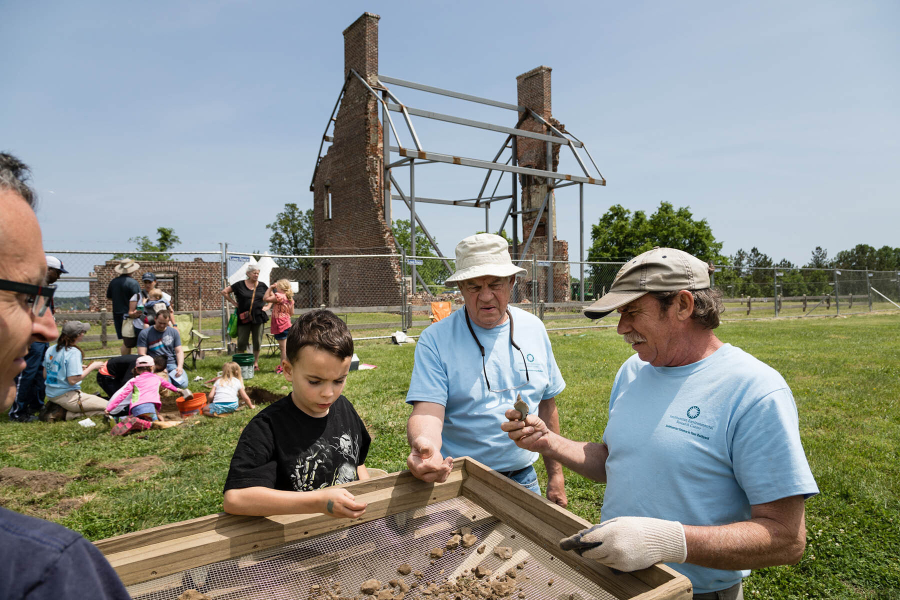Revisiting history at the Smithsonian Environmental Research Center
Once-abandoned farmland became home to cutting-edge research facility

Citizen scientists and volunteers sift for artifacts near the stabilized ruins of the Contee Farm House at the Smithsonian Environmental Research Center (SERC) in Edgewater, Maryland, during its open house on May 20, 2017. Primarily known for its innovative research, SERC is home to more than 180 scientists working to understand environmental changes in the Chesapeake Bay and around the world. But the 2,650-acre campus is also full of opportunities to discover the natural world—with forests, wetlands, marshes and shorelines—and to explore remnants of the land’s history, like the Contee Farm House.
Today, only two chimneys from the original brick mansion, built in the early 1700s, still stand. Although named for John Contee, a Navy officer who purchased the land after the War of 1812, Contee was mostly an absentee owner and never actually lived on site. When he passed away, his two sons divided the farm into two sections: Contee and Java. Through the following decades, both farms fell into disuse and disrepair, transferred among a series of absentee owners.
In 1915, a businessman named Robert Lee Forrest took control of the Java Farm portion of the land. Forrest turned it into a dairy, delivering milk to much of the surrounding area. When his farmhands began leaving to fight in World War II, however, the farm again fell into disrepair. But in 1962, when Forrest passed away, a surprising discovery was made: Forrest, who had no prior connection to the Smithsonian Institution, had willed his 368-acre property to the organization.
Unsure at first about what to do with the land, the Smithsonian established it as a field collection site known as the Chesapeake Bay Center for Field Biology. As the years passed, the center grew and changed names, renamed the Chesapeake Bay Center for Environmental Studies in 1970 and earning its current name, SERC, in 1985. In 2008, SERC acquired the adjacent Contee Farm, uniting the Contee and Java portions for the first time in more than 150 years. The nearby Sellman Farm was also added to the property, bringing the campus to its current size.
Today, in addition to cutting-edge research facilities, SERC boasts the largest tract of contiguous preserved land and largest site of public access on the Chesapeake Bay’s western shore. Visitors are welcome to explore the property Monday through Saturday, 9 a.m. to 4 p.m.
Plan a visit to SERC or learn more about SERC’s history.

Comments
There are no comments.
Thank you!
Your comment has been received. Before it can be published, the comment will be reviewed by our team to ensure it adheres with our rules of engagement.
Back to recent stories